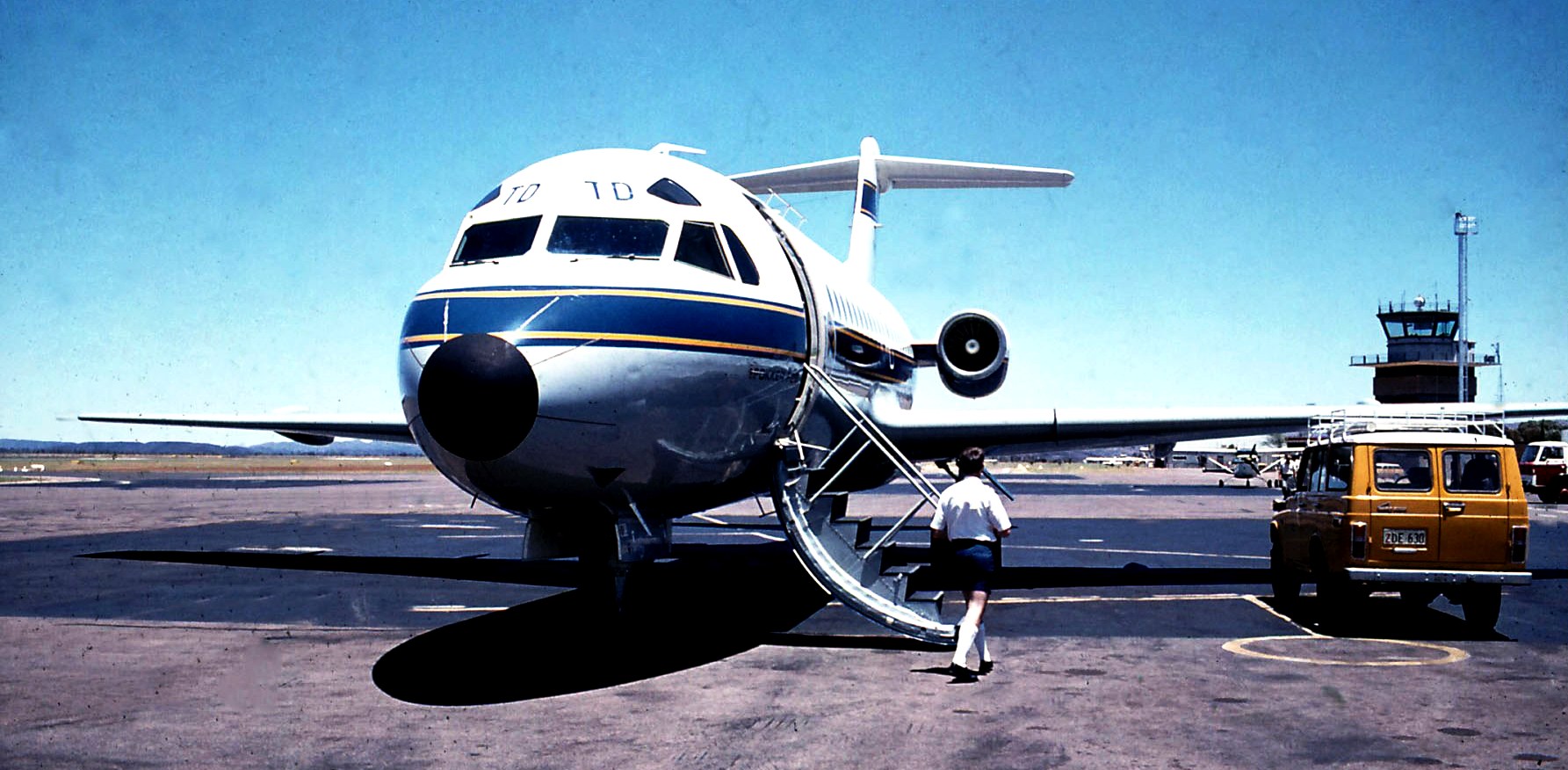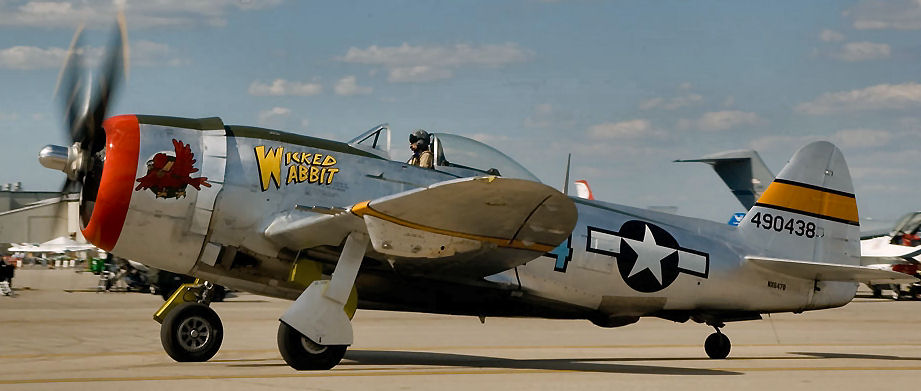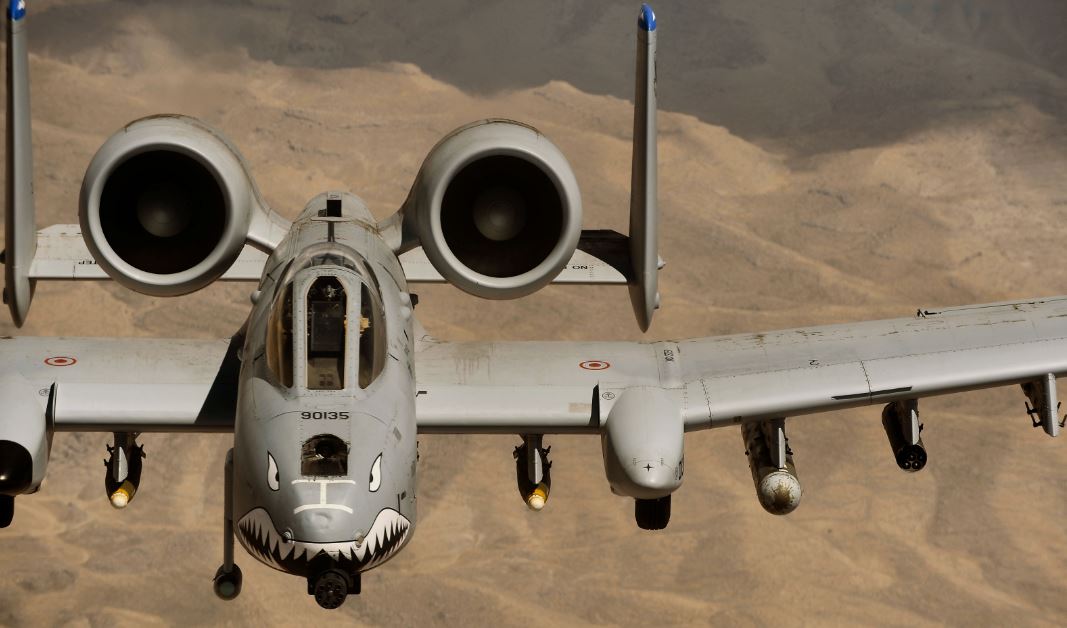|
|
|||
|
Privacy Policy | Editorial Policy | Profit Policy | Join the Association | List of Members | Contact us | Index | Links |
|||
|
Back Go to page: 1 2 3 4 5 6 7 8 9 10 11 12 13 14 15 16 17 18 19 20 Forward |
|||
|
|
|||
|
The People I meet.
|
|||
|
In order to keep this trim, taught and terrific old body of mine in top nick and the envy of all, I regularly go to a gym and every month I see Rebecca Evans B. Hlth Sci (Nut & Diet) (Hons), one of Brisbane's better Nutritionists who consistently reads me the riot act and tries to keep me a respectable distance from French fries, Mars Bars and other delicious delicacies. "Bec" has everything going for her, well almost, she is young, she is a very pretty girl, she has a wonderful career but unfortunately like most in this world of ours she lacks that magic aura - Radtechitis. Recently the word got out that I was once a Radtech with the Nation's finest and bravest and things haven't been the same since. Armed with this knowledge and unable to resist, Bec has consistently, but so far unsuccessfully, tried to capture some of that enthralling aura that surrounds one's body by closing whenever the opportunity exists. Radtechs, trained by the Nation's finest, will know well this phenomena, being a magnet for pretty girls is a cross we are destined to bear for the remainder of our miserable lives.
Fame is such a burden.
Bec has a double degree in Dietitics
and Human Movements and has been working in the health and fitness industry for
over 10 years, both She has represented Australia in Australian U/21 Netball Team and State teams in athletics, softball and swimming. Working as a personal trainer and boxing coach Bec has developed a keen interest in hydration and recovery techniques. She’s also had a lot of experience working with clients in setting and achieving goals, developing healthy eating plans and working towards creating a healthy lifestyle with her clients.
She has also developed and implemented weight loss and pre-natal programs that have focused on both nutrition and exercise components. She also has experience in delivering education sessions on many topics to a variety of age groups, in particular working with clients to educate them on how to read food labels, how to maximise training with nutrition and Healthy eating.
Bec works hard and trains hard to be able to give her clients the best. Her passion is running but enjoys mixing things up with cycling, swimming, boxing and plyometric training on a regular basis. Her motivation to help others achieve their goals and their ability to live the healthiest and best life possible is what inspires her be a part of the Eat Smart Team.
If you want to feel good, to lose weight, to be able to move again and chase the grand kids around the yard, give her a call and make an appointment, Eat Smart has rooms throughout Brisbane.
See here: http://www.eatsmartnutrition.com Blog: http://www.eatsmartdiet.com.au
|
|||
|
I think my problem is indecisiveness. Or maybe it's procrastination. |
|||
|
Jeff Pedrina
"Tucked away in a bottom drawer in my den is a memento of an experience I'd probably rather forget. And yet, I feel now that I'd like to share it since, even if it's not unique, it is certainly unusual, particularly the way it happened.
My memento is the face blind firing handle from a Martin Baker ejection seat.
|
|||
|
|
|||
|
After 600 hours flying the RAAF’s Macchi jet trainer, during which the only hints of trouble had been a runaway trim while low flying and the unsuccessful attempts of several students to kill me while demonstrating their versions of what I was trying to teach them, I expected my instructional tour to come to a quiet close. Short of learning emergency procedures, actually abandoning an aircraft was something tucked into the corner of my mind labelled: 'Possible, but highly unlikely'.
Nothing further had happened to change this state of mind when, on the 1st October, 1969, I set out with a student on a low level navigation exercise. It was a test sortie for him, but he was a good student so, apart from giving him a couple of problems to solve I was expecting a pleasant 'Sunday drive'.
The Macchi is a funny beast in which to instruct. Being a tandem seater, the instructor sits in the back. Due to the bulk of the student's ejection seat and the curvature of the Perspex canopy, one's forward vision is poor. You certainly can't see over your student's head, but have to lean left or right depending on crosswind, to get a good view of the runway during approach and landing. During flapless approaches you can barely see the runway at all. At night, there is a bonus; due to reflections inside the canopy, you can see two or even three runways depending on where your head is and the gyrations of your student. Demonstrating a night landing to a student is therefore an act of bravery. Hopefully, he'll learn quickly and you won't have to do it again.
Back to the Navex.
The student was doing fine. He gave me a good briefing on the route,
answered my questions correctly, performed all his checks meticulously
and even remembered to close the canopy before lining up on the runway.
The tower cleared us for take-off and the student, F/O Herbert Badower, opened the throttle smoothly and
quickly so that the RPM indicator needles spun crazily until they
reached 100%. With a
I relaxed a shade; the danger zone of possible engine failure after take-off was now past. We levelled off at 5000 feet and headed for the start point of the navex where we would descend to 200 feet above terrain. It was a magnificent Perth spring day with a comfortable yellow sun shining out of a cloudless sky. Patches of wild flowers shouted their colours from bushy islands amid ploughed paddocks, the winter greens already turning to summer browns.
Herbert continued coping well. He found his start point without trouble, punching his stop clock as we flashed overhead at 200 feet. To reduce the risk of collision with terrain or obstacles, there's no pencilling on these exercises. The students put all required information on their 'topos' (topographical maps), including minute markers from the start point and expected duration to chosen check points. They must identify their check points noting distance left or right of track and whether they are early or late. They must then make mental calculations for heading changes to put the aircraft back on track and adjust the ETA (expected time of arrival) at subsequent check and reporting points. At possible groundspeeds up to 400 knots, quick assessments and quick decisions are required.
I was glad to see Herbert holding his map high, as he had been instructed to do. He would see the high tension power lines ahead in time to take avoiding action. We passed directly over a conspicuously shaped road-rail crossing. I wondered whether Herbert had seen his chosen check point, a rail bridge just outside a town, almost hidden behind trees a mile to our left."
"We were a half mile starboard of track at our last check point, sir," announced Herbert. "This crossing is a mile starboard of my check point. That must be the bridge this side of that wheat silo". "He altered heading eight degrees port. Good lad, I thought. This is going to be a breeze. I couldn't fault Herbert's navigation on the first and second legs so I decided to extend him with a little problem on the third and final leg. The method I chose was, in retrospect, a little ironic. Having recently returned from a tour in Vietnam, I decided to dress up the problem a little. "Fred," I began. Fred's head bobbed in anticipation of the expected problem. You've just been advised by radio that the town of New Norcia has fallen into enemy hands. Aircraft ahead of us have been fired at. We are advised to avoid the town by at least five miles.
"New Norcia was right on track. Fred at once came up with the expected
answer". "Our groundspeed is six miles a minute, sir. One minute out of
New Norcia I'll turn starboard sixty degrees and make a one minute
dog-leg". "Okay, Fred, that’s fine I replied, and settled back for an
armchair ride. We'd just rolled out of the turn when the Fire and
Overheat warning lights came on. For a couple of seconds, I stared
dumbly at this intrusion into a pleasant afternoon's flying. Then
comprehension jolted back with a rush. I scanned my
Have you got warning lights? I snapped at Fred". “Yessir," he stuttered. "(He later told me he thought I'd somehow activated the lights as part of his test.)
Standby. We're going to eject.
"Taking over, I slammed the throttle closed and put the Macchi into a zoom climb. I looked over my shoulder for smoke or a 5000 foot bitumen runway which some ambitious farmer might have constructed without the Air Force's knowledge. I saw neither. It's amazing what flashes through your brain in circumstances like this. I’d had two fire warning lights before, in Caribous, both were false and due to moisture in the fire detection circuit. Yet a month ago, a Macchi had crashed after take-off when, after a fire warning, the control rods had burnt through. One pilot got out; the other went in with the aircraft. Now I had Fire and Overheat lights, an unlikely combination since detectors in two compartments would have to be activated. But the golden rule said: Treat every fire warning as a real fire. There was really no choice.
Fred, I want you to eject on my command. I pressed the radio transmit button. Delta five five, eject … eject … eject'. This would alert the following aircraft, which was five minutes behind us. Fred took a little longer than I expected. We were approaching the apogee of our climb. Suddenly there was a bang, followed by a blast of slipstream as the canopy fired. I held my head down. Then I was conscious of another bang, and Fred's seat disappearing. I looked up and was a little alarmed to see the telescopic seat rail sticking up several feet into the air where Fred's seat had been. I quickly retrimmed the aircraft and grabbed the face blind handle. The last thing I remember seeing before I pulled the blind over my face was the altimeter. It said 1700 feet.
There was a tremendous explosion underneath me and a huge force propelled me upward. Unable to see I felt that I was tumbling over until my head pointed back towards the ground. Again, my brain rushed with fleeting thoughts, all in the space of a few seconds … What if the parachute doesn't open?… What if I'm upside down? … How long will I wait before pulling the manual override D-ring?
Suddenly, there was a tremendous jerk, as if I'd smashed into a brick wall. My body felt as though it would break in half. It was the main parachute opening. (The ejection sequence is fully automatic. Pulling either face blind or seat pan handle separates the aircraft canopy with an explosive charge and, one second later, fires the explosive cartridges in the ejection seat, blasting it clear of the aircraft. A timing device controls opening of the drogue chute which, when deployed, opens the main chute and release of the restraint harness so that the seat can fall away. The complete sequence occupies only a few seconds.) Now, after all those bone-jarring gyrations, I found myself hanging in my parachute harness, floating gracefully earthward.
I looked around me and was amazed to see the aircraft also still descending. My distorted time reference suggested it should have plunged into the ground ages ago. I suffered momentary pangs of alarm as it appeared to turn towards me. It looked rather graceful, gently descending towards the rolling fields below. I felt sad when it made a near perfect landing, then bounced, and burst into bright orange flame. I could hear no noise; it was as if I were watching a silent movie. Fred was nowhere to be seen; perhaps he was somewhere behind me.
Suddenly, I became aware that I was not really floating at all. I was drifting rapidly towards some angry looking gum trees whose large, upward-pointing branches could do me a terrible mischief. I pulled down on my parachute risers, trying ineffectually to counter the drift. I scraped past the nearest tree scratching my back-side and landed heavily on the ground. I tried to do the approved sideways roll but the wind caught the chute rolling me onto my back and my head thudded onto the ground. My bonedome took most of the shock, but I lay there momentarily, stunned.
Again, my brain flashed messages, driving me upright, urging me to gather in the chute so it couldn't drag me away. I released the harness and took stock of my situation. I felt as though I'd just woken up from a weird dream, as one would by falling out of bed. I took a few ginger steps. Though I felt pretty sore, there was nothing broken. Through the trees, I could see a road. I would make for that with the hope of being spotted from the air, or meeting help. As I climbed through the fence, I was relieved and pleased to see Fred climbing through on the other side.
"I watched you come down", he said as though we were engaged in some sort of sporting event.
"G'day. Saw ya come down. How 'bout a cuppa tea with me an me mate?" he said, as though this sort of thing happened every day.
"And so it was that when the Base Rescue chopper arrived, the crew found us drinking tea at the camp fire of two itinerant farm workers, a hundred yards from where we'd landed. That night, as we sat up in our hospital beds, we saw the end of the drama on TV; two tattered figures climbing from a chopper into a waiting ambulance. Just before the ambulance door closed, to my wife's embarrassment, the camera homed in on my wounded right buttock, visible through my torn flying suit and underwear, courtesy of the gum tree.
If you'll forgive the pun, that was truly the end of the tale!
Postscript: It was later discovered that the warning lights were illuminated by a faulty relay. A Perth citizen wrote to the local newspaper demanding that the $300,000 which that paper had said the Macchi was worth should be deducted from our salaries until the amount was paid off."
Click the pics below for a bigger view. |
|||
|
A few months before this incident, on the 31st January, 1969, Flt Lt Stew McAlister and a student, P/Off Rod Heiderman, also had to leave an aircraft while on a training flight out of Pearce. Their aircraft went out of control in an inverted spin and the two crew had to eject. Stew suffered a compression fracture of the spine, broken facial bones and eye damage and Rod suffered bruised biceps and buttocks on ejection, then scratches to his face as he landed through a tree. The aircraft crashed into sandy loam in open scrub.
Click HERE to see chronological listing of Australian RAAF and RAN ejections.
When Jeff left the RAAF, he joined the Civil Aviation’s Flying Unit and flew the Unit’s F28 calibration aircraft which was based at Essendon Airport. In 1974 the F28’s replaced the Unit’s F27 and was chosen because:
The F28 was a highly
reliable and utilitarian aircraft. There were over 800 navigation aids
in Australia and PNG for which CAA held in-flight calibration
responsibility, including a few privately-owned facilities and those
operated by the Department of Defence at the various RAAF and RAN bases
around the country. Each facility had to be checked, not only on a
routine basis with time intervals varying from six months to two years,
but also to reinstate an aid following modification, primary component
change or failure.
Each F28 was fitted out to enable it to fulfil its calibration role with equipment that was additional to that installed as part of the aircraft’s normal avionics. The equipment was operated by specialist technical personnel seated at two consoles in the forward passenger cabin. The test equipment was itself subject to rigorous test and calibration sequences by the Flying Unit’s Laboratory, as part of ensuring compliance with the national measuring standards.
The aircraft had a total of 39 dedicated flight inspection antennas fitted to inspect the performance of NDB, DMEA, DMEI, TACAN, LLZ, GP, VOR, MKR, SSR together with VHF and UHF communications facilities. In addition, the aircraft was used to calibrate GCA/PAR and VASIS. Calibration missions could last for up to ten days, covering the Australian FIRs (Flight Information Region) from Cocos Island in the West to Norfolk Island in the East plus Papua New Guinea which was done on a contractual basis.
Routine calibration methods for NDB and DME do not call for any particular operational techniques. The aircraft is usually flight-planned to pass within range of the nominated facility and the various signal characteristics are recorded and compared against previous results to detect any change. If a fault is detected, the ground technical staff responsible for the aid are advised, and they rectify the defect. With some of the remote sites, the technical staff can be several hundred kilometres away by road and in such cases a repeat flight is arranged to coincide with their presence at the site to confirm that the defect has been corrected.
Calibration of those aids which provide precise track guidance, such as
ILS, is more complex. With ILS, the Localiser and the Glide Path are
calibrated as separate elements. The signal characteristics such as
alignment and width, and the behaviour of the installation under the
various alarm conditions, are measured in comparison with a very
accurate
This tracker, which was developed ‘in-house’ by the then Department of Civil Aviation, used a vidicon (light-sensitive video receiver) to track a high-intensity, gyro-stabilised light on the nose of the calibration aircraft and could measure angular displacement to within 0.01 degrees. The tracker was set up near the ground antenna of the element to be measured and tracked the calibration aircraft as it made a series of approaches. Movement of the tracker head as it followed the aircraft was converted to a digital signal and then telemetred back to the aircraft on a discrete VHF channel. It was then compared electronically to the incoming signal from the Localiser or Glide Path and the results recorded on a multi-channel recorder. As the flight test progressed, the Flight Surveyors at the consoles monitored the results and advised the ground party of any adjustments which were required. A typical routine flight test of a Localiser or Glide Path would require from eight to twelve approaches and consume some 75 to 90 minutes flight time, with every alternate flight test (annual) being carried out in greater detail, measuring more parameters and requiring additional approaches.
The piloting and measuring tasks required a high degree of concentration and teamwork within the crew, not to mention a high degree of precision and skill on the part of the pilots. VOR (Omni) calibration was less complex, but the technique still required the use of an independent ground-based measuring device in the form of a very accurate pilot-balloon theodolite. The theodolite was set up at a previously surveyed position near the VOR and the calibration aircraft flew an orbit around the site at a radius of six nautical miles and an altitude 2000 ft above the site elevation. The altitude varied for particular sites, depending upon local terrain; at Cairns for example, the orbit was flown at 4000 ft in order to miss the hills to the west.
As the aircraft was flown around the VOR, it was tracked with the theodolite by the ground party and the magnetic bearing called every ten degrees. The bearings were compared with those radiated by the beacon and received by the air craft and the results recorded and compared with those found on previous tests. The orbit established the basic alignment of the beacon and, if necessary, adjustments were made to bring the system into tolerance. At the completion of the orbit, the calibration aircraft then flew a series of route radials out to a distance of 12 to 15 nm, to check such parameters as course quality, bending, scalloping etc while being tracked with the theodolite. Bearings were again called by the ground party and compared with the data received in the aircraft. Up to twelve radials would be flown, selected from the published routes, to provide a representative picture of the facility through 360°.
Calibration operations outside controlled airspace (OCTA) placed significant extra demands on the crew, as they not only had to concentrate on the calibration task, with its demands for precise flying, but in some instances they would be required to monitor up to three communications frequencies, as well as look out for, and keep mental track of other aircraft in the vicinity. OCTA the rule is “look out the window and separate yourself” and over the years, there have been occasions when separation standards have broken down. |
|||
|
|
|||
|
Jeff about to board the F-28 at Alice Springs airport – ready for another day's work.
Jeff says “one of my jobs while based in the Queensland Region was to crew the Region's aircraft, a Swearingen Merlin IIB, a top of the range twin turboprop. A colleague of mine, Greg Richardson and I were rostered to fly a group of radio techs to Horn Island to do some maintenance on radio installations there. Since we would have a few idle hours waiting for them to finish their work Greg talked me into taking my metal detector (a hobby) with us. Horn Island had been a war time base, and Greg thought we might dig up something interesting. Little did we know!
Greg chose a promising area adjacent to the airfield and eagerly grabbed the metal detector and my digging kit, an ex Vietnam M1 souvenir bayonet. After a few sweeps the metal detector gave a promisingly loud blip. Greg immediately and enthusiastically started digging. Pretty soon he contacted metal. Digging deeper he unearthed a complete un- exploded shell. In a very quick decision we re-buried the shell and hastily vacated the area. Nothing happened and we quietly packed up the metal detector, wondering who to report our find to. We heard nothing more about it!”
Telstra have a very useful saying – “Phone before you dig”. Jeff reckons that’s smart advice!!
|
|||
|
What you don't see with your eyes, don't invent with your mouth.
|
|||
|
The C-130 on display at the front gate of Little Rock AFB, Arkansas.
This C-130A Hercules was the 126th built by Lockheed Aircraft corp. of Marietta, Georgia. It was accepted into the US Air Force inventory on 23 August 1957. (4 blade props?? - tb)
On 2 November 1972, it was given to the South Vietnamese Air Force as part of the Military Assistance Program. A few years later, the aircraft would be involved in an historic flight. |
|||
|
|
|||
|
On 29 April 1975, this Herk was the last out of Vietnam during the fall of Saigon. With over 100 aircraft destroyed on the flight line at Tan Son Nhut Air Base, some of them still burning, it was the last flyable C-130 remaining. In a very panicked state, hundreds of people were rushing to get aboard, as the aircraft represented a final ticket to freedom.
People hurriedly crowded into the Herk, packing in tighter and tighter. Eventually, the loadmaster informed the pilot, Major Phuong, a South Vietnamese instructor pilot, that he could not get the rear ramp closed due to the number of people standing on it. In a moment of inspiration, Major Phuong slowly taxied forward, then hit the brakes. The loadmaster called forward again stating he had successfully got the doors closed.
In all, 452 people were on board, including a staggering 32 in the cockpit alone. Using a conservative estimate of 100 pounds per person, it translated into an overload of at least 10,000 pounds (4,535 kg). Consequently, the overweight Hercules slowly ran down the 9,000 foot runway, finally staggering off the ground at the end of the 1,000 foot overrun. It stayed in ground effect until it gained enough speed to begin a shallow climb.
The target was Thailand, which should have been 1:20 in flight time, but after an hour and a half, the aircraft was over the Gulf of Slam, and they were clearly lost. Finally, a map was located, they identified some terrain features and they were able to navigate. They landed at Utapao, Thailand after a three and a half hour flight.
Ground personnel were shocked at what "fell out" as they opened the doors. It was clear that a longer flight would almost certainly have resulted in a loss of life. In the end, however, all 452 people made it to freedom aboard this historic C-130.
Upon landing, the aircraft was reclaimed by the United States Air Force and assigned to two different Air National Guard units for the next 14 years.
On 28 June 1989, it made its final flight to Little Rock Air Force Base and placed on permanent display.
|
|||
|
One good turn gets most of the blankets.
|
|||
|
The Thunderbolt.
The Republic P-47 Thunderbolt was one of the largest and heaviest fighter aircraft in history to be powered by a single piston engine. It was heavily armed with eight .50-caliber machine guns, four per wing. |
|||
|
|
|||
|
When fully loaded, the P-47 weighed up to eight tons and in the fighter-bomber ground-attack roles could carry five-inch rockets or a significant bomb load of 2,500 pounds; it could carry over half the payload of the B-17 bomber on long-range missions (although the B-17 had a far greater range).
The P-47, based on the powerful Pratt & Whitney R-2800 Double Wasp engine, was to be very effective as a short-to-medium range escort fighter in high-altitude air-to-air combat and, when unleashed as a fighter-bomber, proved especially adept at ground attack in both the World War II European and Pacific Theatres. That R-2800 engine was considered one of the best radial piston engines ever designed and is notable for its widespread use in many important American aircraft during and after World War II. Apart from military aircraft, such as the very successful Grumman F6F Hellcat and Vought F4U Corsair, it also powered the Convair CV-240 family of aircraft and the Douglas DC-6. 125,334 were built.
The Thunder bolt was one of the main United States Army Air Forces (USAAF) fighters of World War II and served with other Allied air forces, notably those of France, Britain, and Russia. Mexican and Brazilian squadrons fighting alongside the U.S. were also equipped with the P-47. The armoured cockpit was roomy inside, comfortable for the pilot and offered good visibility. A modern-day U.S. ground-attack aircraft, the Fairchild Republic A-10 Thunderbolt II, takes its name from the P-47. |
|||
|
|
|||
|
|
|||
|
Click the video below to see the Thunderbolt in action during WW2. |
|||
|
| |||
|
|
|||
|
A small boy's definition of Father's Day: It's just like Mother's Day, only you don't spend as much. |
|||
|
|
|||
|
|
|||
|
Back Go to page: 1 2 3 4 5 6 7 8 9 10 11 12 13 14 15 16 17 18 19 20 Forward |
|||
|
|

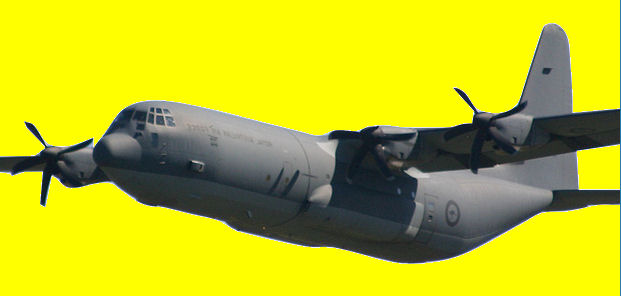
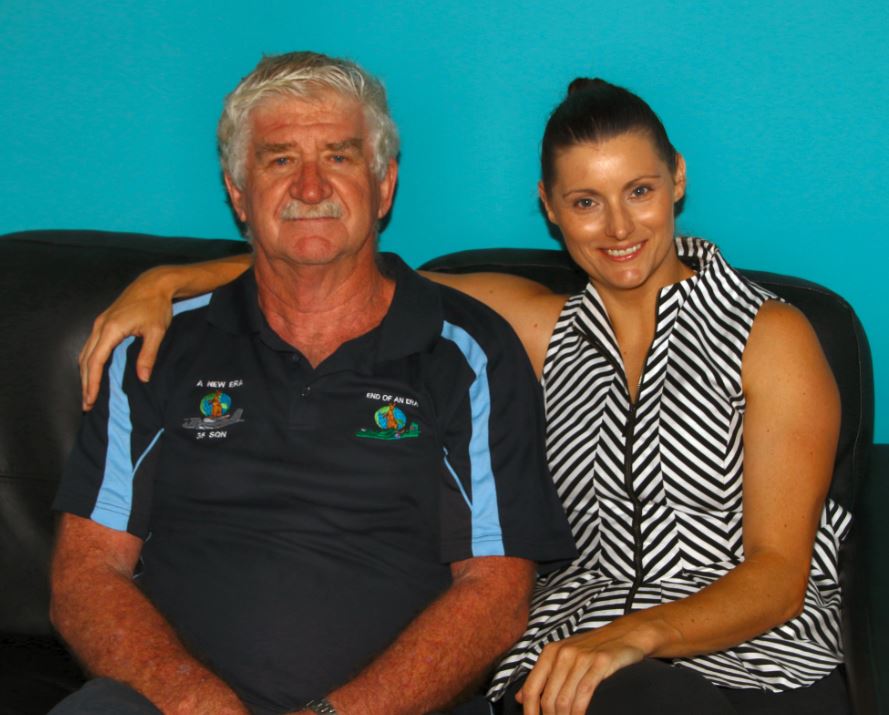
 as a personal trainer and a nutritionist for sports
teams such as State League netball and soccer teams. Bec specialises in
weight loss/management, chronic diseases such as diabetes management,
Cardiovascular, kidney disease and respiratory conditions with a strong
area of interest in sports nutrition as well.
as a personal trainer and a nutritionist for sports
teams such as State League netball and soccer teams. Bec specialises in
weight loss/management, chronic diseases such as diabetes management,
Cardiovascular, kidney disease and respiratory conditions with a strong
area of interest in sports nutrition as well.
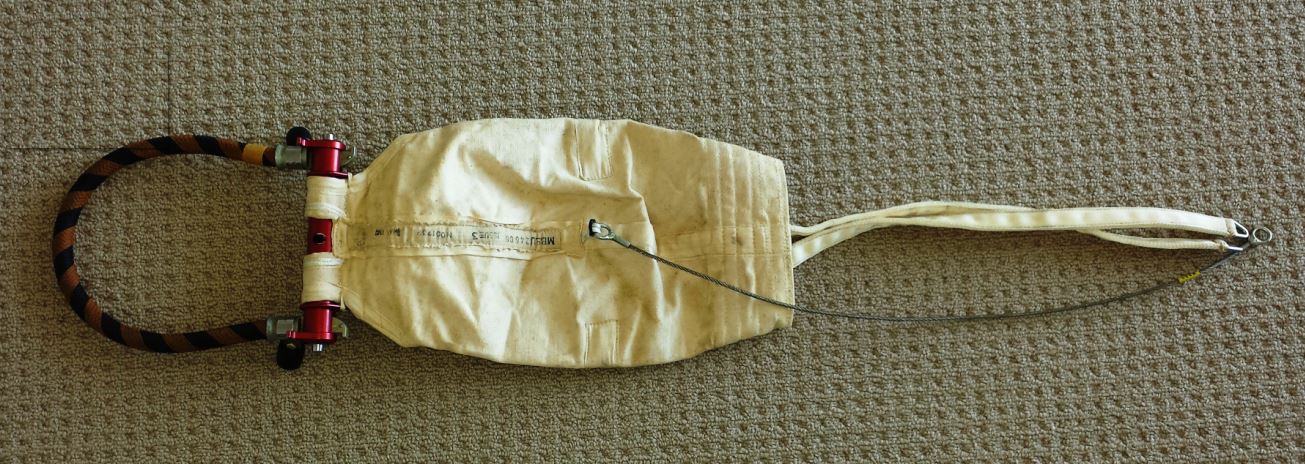
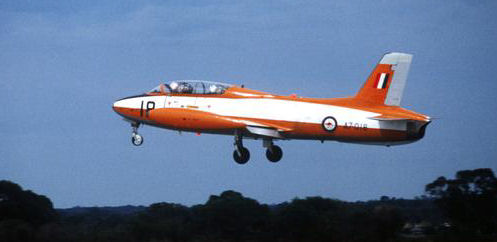 lurch, we were away. Lift off at 100. . .150. . . 200 knots and we were
in the climb.
lurch, we were away. Lift off at 100. . .150. . . 200 knots and we were
in the climb.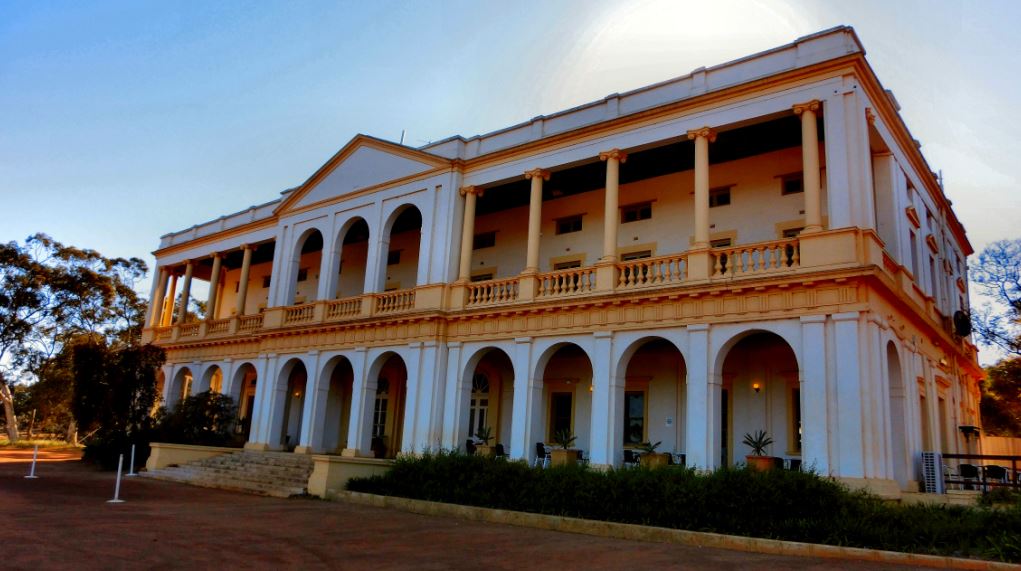 instrument panel: no other abnormal indications.
instrument panel: no other abnormal indications.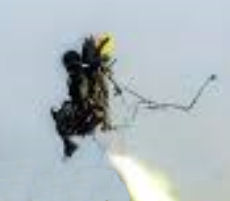
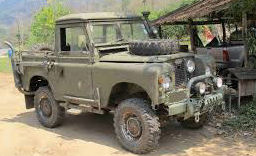 "While
we exchanged commiserations, a Macchi whined overhead. It was the
following navex aircraft. It waggled its wings; we'd been sighted. Just
then, a Landrover bumped into view along the pot-holed road. It skidded
to a halt beside us. A burly figure, face unshaven and dressed in
dungarees and a battered hat reminiscent of Saltbush Bill, climbed out.
"While
we exchanged commiserations, a Macchi whined overhead. It was the
following navex aircraft. It waggled its wings; we'd been sighted. Just
then, a Landrover bumped into view along the pot-holed road. It skidded
to a halt beside us. A burly figure, face unshaven and dressed in
dungarees and a battered hat reminiscent of Saltbush Bill, climbed out.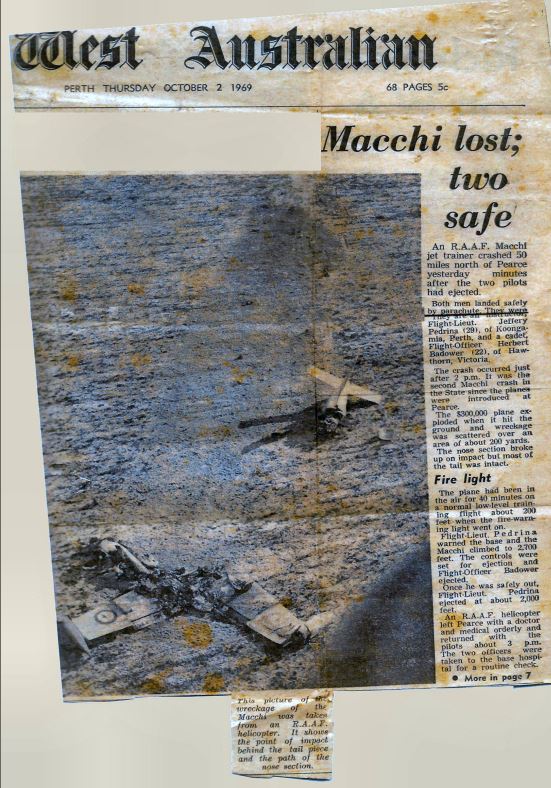
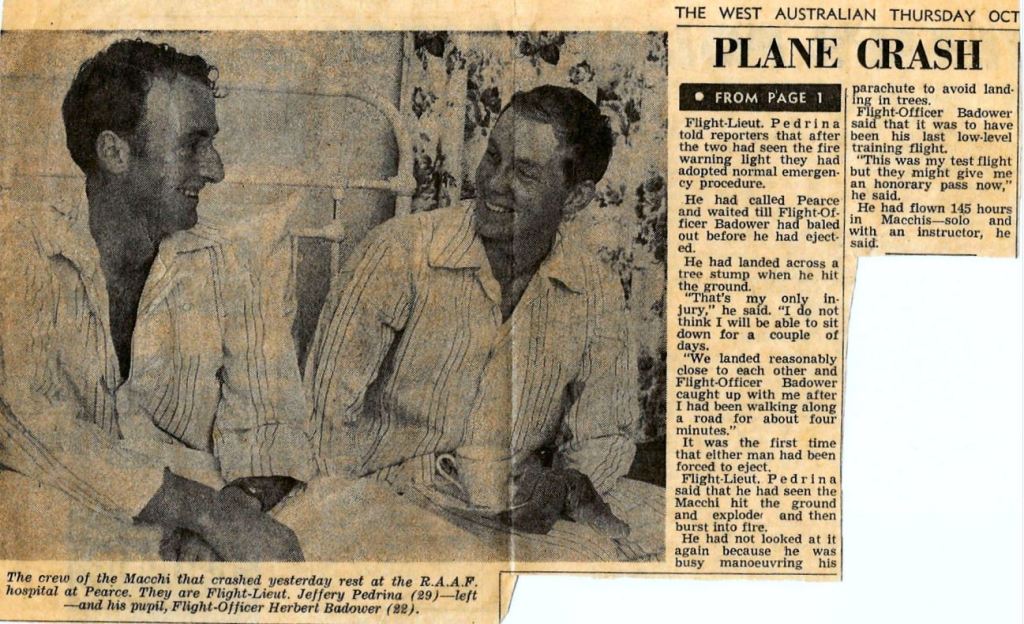
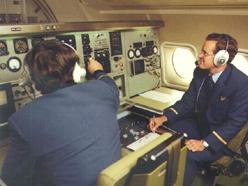
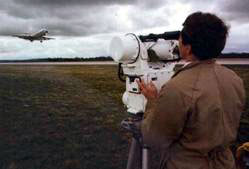 automatic tracking device which provides reference data on the
aircraft’s flight path.
automatic tracking device which provides reference data on the
aircraft’s flight path.